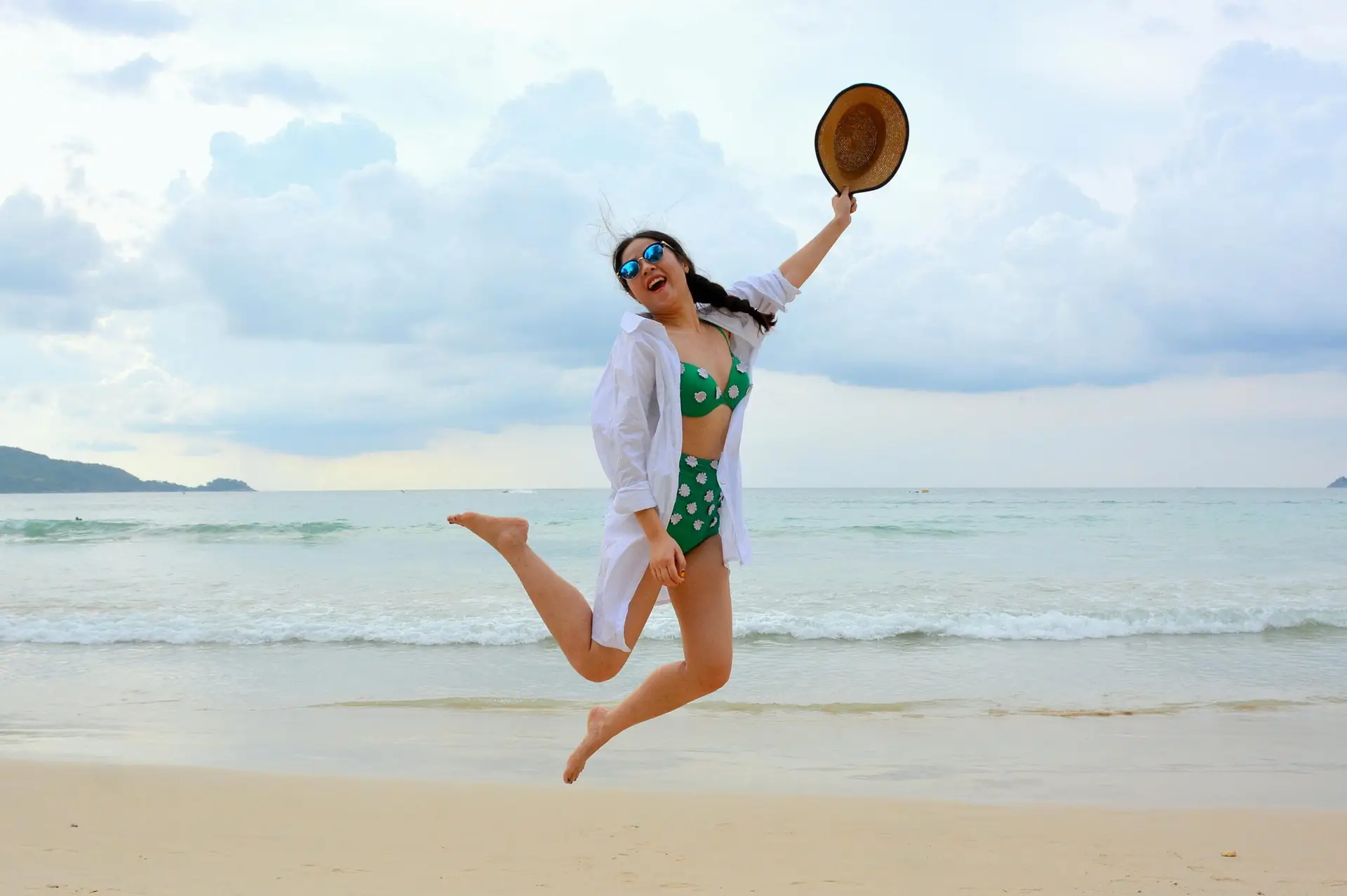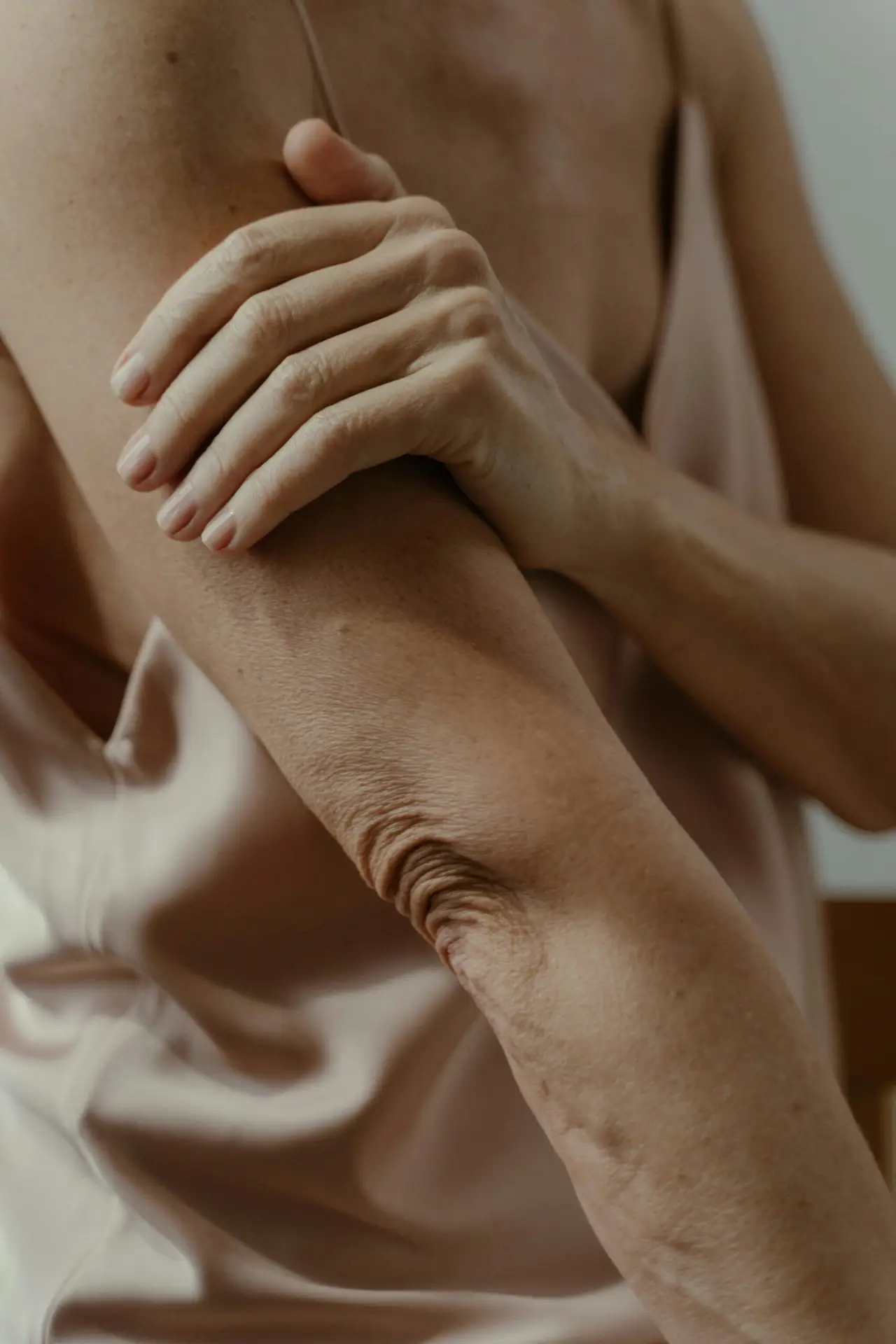
How Do I Improve My Balance? Feeling unsteady—even a little—changes how you move through life. Maybe you hesitate to step off a curb. Maybe grocery store aisles feel like they’re tilting. Some days it’s a subtle wobble; other days it’s full-on spinning. If you’ve been told “it’s just vertigo,” handed a medication, or taught a few exercises that only help temporarily, you’re not alone. The truth is that lasting balance comes from a calm, well-coordinated nervous system—and for many people, the missing link sits higher than the inner ear. It sits at the top of your spine, where your head meets your neck.
At Lavender Family Chiropractic in Sarasota, Florida, our doctors—Dr. Rusty Lavender, Dr. Jacob Temple, and Dr. Will Guzinski—focus on Upper Cervical Chiropractic, a precise, gentle approach that helps restore the brainstem’s control of balance, posture, and orientation. If you’re dealing with vertigo, BPPV, Meniere’s disease, MdDS, PPPD, vestibular migraines, or “mystery” balance problems, this guide will show you how the upper neck can be the key to steadying your world.
How Do I Improve My Balance? Balance 101: How Your Body Knows Which Way Is Up
Your balance is a three-system symphony:
- Visual system (eyes): Provides horizon and spatial reference.
- Vestibular system (inner ears): Detects head motion and acceleration.
- Proprioceptive system (muscles & joints): Sends body-position feedback—especially from the upper neck.
All three streams converge in your brainstem—the neurological “traffic director” that integrates signals and tells your body how to stabilize your head, eyes, and posture. When those signals agree, you feel solid. When they conflict—even slightly—you get dizziness, drifting, swaying, rocking, blurring, nausea, ear pressure, brain fog, or a “walking on a boat” sensation.
Why do so many people with balance problems also have neck stiffness, headaches, jaw tension, or shoulder tightness? Because the upper cervical spine (C1/atlas and C2/axis) is loaded with high-precision proprioceptors. If atlas shifts out of its ideal position, neck muscles start firing asymmetrically, and the information they send to your brainstem becomes noisy. Noisy input = shaky output.
The Upper Cervical Connection: Why Your Neck Can Make You Dizzy
The atlas (C1) and axis (C2) cradle the brainstem and are the only vertebrae in your spine that don’t interlock with discs—so they must be precisely aligned. Even a small misalignment can:
- Irritate brainstem pathways that coordinate eye-head movement and posture.
- Distort proprioceptive signaling from suboccipital muscles.
- Influence cranial nerve function involved with hearing, equilibrium, and facial/jaw function.
- Alter blood and cerebrospinal fluid (CSF) dynamics, affecting pressure regulation and inner-ear fluid balance.
This is why people with BPPV, Meniere’s, vestibular migraine, MdDS, PPPD, and post-concussion dizziness often respond when we correct the upper neck. Fix the head-neck relationship, and the rest of the balance network has a chance to re-synchronize.
Common Balance Problems We See—And Why They Persist
Vertigo (Spinning or Motion Illusion)
Not every dizzy spell is vertigo, but when the room spins, it’s usually because the brain is receiving mismatched signals about movement. Traditional care often aims at the inner ear alone. But when the atlas is off, the vestibulo-ocular reflex (VOR) can’t stabilize your vision efficiently, and even small head turns can feel like too much. Correcting atlas alignment helps quiet the “false motion” at its control center.
BPPV (Benign Paroxysmal Positional Vertigo)
BPPV is associated with displaced otoconia (“ear crystals”). Maneuvers like Epley can reposition them, but recurrence is common if the head-neck mechanics remain imbalanced. Think of it like a tilted fish tank: even if you move the pebbles, they’ll shift again if the tank stays off-level. By restoring upper cervical alignment, we help normalize mechanics and reduce the revolving door of repeat episodes.
Meniere’s Disease (Vertigo, Hearing Changes, Ear Fullness, Tinnitus)
Fluid pressure in the inner ear is a hallmark of Meniere’s. Stress to brainstem pathways and subtle changes in venous/CSF outflow from upper cervical misalignment may aggravate the pressure dynamics that flare Meniere’s symptoms. Many patients report fewer and less intense attacks after their atlas is corrected and nervous system irritability settles down.
MdDS (Mal de Débarquement Syndrome—Rocking/Swaying After Travel)
Classic MdDS feels like you’re still on a boat or plane. The brain “locks” into an abnormal motion pattern and won’t release it. Because head-neck proprioception is key to recalibrating motion, a misaligned atlas can prolong the pattern. Gentle, precise upper cervical adjustments can help the nervous system re-adopt stillness as the default.
PPPD (Persistent Postural-Perceptual Dizziness)
PPPD is a chronic dizziness and imbalance syndrome that often follows another vestibular event—sometimes a concussion, panic episode, or viral illness. It’s not “in your head,” but it is processed by your brain. By decreasing brainstem stress and restoring cleaner proprioceptive input from the upper neck, we see patients regain their confidence, mobility, and calm.
Vestibular Migraine
With vestibular migraine, balance symptoms may eclipse head pain—light sensitivity, motion sensitivity, visual snow, and nausea. Sensory gating at the brainstem is often over-amped. Upper cervical correction can reduce that baseline excitability so your triggers don’t send you into a spiral.
Post-Concussion Dizziness
Even “mild” concussions can shift the atlas by fractions of a millimeter—more than enough to scramble proprioception. If you’ve tried rest, PT, or vestibular therapy with partial relief, upper cervical care often supplies the missing reset that lets your other therapies finally “stick.”
Why Symptoms Linger (Even When You’re Doing “All the Right Things”)
- You improved the ear but not the neck. Canalith maneuvers help—until the next flare.
- You trained balance on a crooked foundation. Exercises are powerful when the head-neck platform is level.
- You treated symptoms, not signaling. Meds can calm sensations briefly, but if brainstem input stays noisy, balance can’t stabilize.
- You never measured the misalignment. Without precise imaging, sub-millimeter shifts remain invisible—and uncorrected.
Our Process at Lavender Family Chiropractic (Sarasota, FL)
Step 1: Conversation & Functional Testing
We listen first. When did it start? What movements provoke it? What does your neck feel like? We’ll assess posture, head-turn tolerance, smooth pursuit (eye tracking), and stance stability so we can see how your system is compensating.
Step 2: 3D CBCT Imaging (Cone-Beam CT)
We use state-of-the-art 3D CBCT to visualize the unique geometry of your atlas, axis, and skull base. This lets us measure alignment down to fractions of a millimeter and degrees—no guesswork, no generic adjustments. Your spine is as unique as your fingerprint; your correction should be too.
Step 3: Tytron Functional Nervous System Scans
The Tytron paraspinal infrared thermography scan reads autonomic (brainstem) patterns through heat asymmetries along the spine. It helps us identify if your nervous system is stuck in a stress pattern—and it gives us an objective way to measure improvement after each correction.
Step 4: Gentle, Precise Upper Cervical Adjustment
Our adjustments are low-force, specific, and controlled. There is no twisting, cracking, or popping. We use your CBCT blueprint to deliver a tailored correction that restores the head-neck relationship and calms brainstem irritation.
Step 5: Post-Check and Plan
We rescans with Tytron and monitor your functional changes. Early on, many patients report less swaying, clearer head pressure, more stable eyes during head turns, and a grounded feeling underfoot. Your plan includes spacing visits to help you hold alignment—because true healing happens when you’re holding, not when you’re constantly re-adjusting.
What Improvement Feels Like (Patient Perspectives)
- “I can walk through the store without grabbing the cart.”
- “The boat feeling finally stopped.”
- “My ears aren’t full anymore, and I’m not afraid to look up.”
- “Headache days fell from five a week to one or none.”
- “I’m driving again—no more panic at stoplights.”
We love seeing people reclaim the simple things: morning walks on Siesta Key, date nights in Lakewood Ranch, beach days on Lido Key, or pickleball in Bradenton—without bracing for a dizzy spell.
At-Home Strategies That Support Better Balance (And When To Use Them)
These tips help—once your head-neck foundation is corrected. Otherwise, you may be training around a structural problem.
Daily Hydration
Aim for steady hydration throughout the day. Inner-ear fluids and overall neurologic function both prefer consistency.
Salt & Caffeine Awareness
For Meniere’s or vestibular migraine, watch sodium and caffeine. Keep a simple trigger journal—if you don’t see a pattern after a few weeks, relax the restriction.
Gentle Mobility, Not Aggressive Stretching
Your upper neck prefers calm, precise motion. Large, jerky rotations can aggravate symptoms. After you’re stable, your doctor may recommend very light range-of-motion routines.
Balance Drills (Post-Correction)
- Feet together, eyes open, 30–60 seconds.
- Tandem stance (heel-to-toe), progress from eyes open to eyes closed.
- Head turns slowly while focusing on a stationary target.
Always train in a safe space (corner, countertop), and only after your doctor confirms your correction is holding.
Vision Hygiene
If screens trigger you, try 20-20-20 (every 20 minutes, look 20 feet away for 20 seconds) and reduce fast-scrolling content until your system calms.
Sleep Is Therapy
Your brain consolidates sensory gains during sleep. Protect your routine, and consider a neutral pillow height that doesn’t crank your neck into flexion or extension.
Is It Safe? What If I’m Sensitive?
Upper cervical care at our clinic is remarkably gentle. We treat seniors, athletes, office professionals, and kids. If you’re highly sensitive, we can stage care more gradually, building tolerance while your nervous system desensitizes. The goal is getting your body to hold alignment with fewer interventions over time.
Why Lavender Family Chiropractic?
- Exclusive focus on Upper Cervical—we live and breathe atlas/axis precision.
- 3D CBCT + Tytron—objective, measurable, tailored.
- No twisting/cracking—great for sensitive, vestibular-prone patients.
- Team of three doctors—collaborative eyes on complex cases.
- Local expertise with vertigo, Meniere’s, MdDS, PPPD, vestibular migraine, POTS, TMJ, post-concussion, neck pain, and headaches.
- Serving Sarasota, Bradenton, Lakewood Ranch, Parrish, Ellenton, Venice, Osprey, Punta Gorda, St. Petersburg, Siesta Key, Longboat Key, Lido Key, and Myakka City.
If you’ve been searching “chiropractor Sarasota Florida,” “upper cervical chiropractor near me,” “vertigo doctor near me,” or “migraine doctor near me,” this is your sign to get checked above where most people look—the upper neck.
Case Snapshots (Names Changed for Privacy)
Case 1: BPPV That Kept Coming Back
“J” (Lakewood Ranch) had three Epley maneuvers in six months. CBCT showed a right-lateral atlas with rotational torque. After a series of gentle corrections and spacing visits to support holding, he resumed gym routines with no positional spins for months.
Case 2: MdDS After a Cruise
“M” (Bradenton) felt constant rocking for four months. Visual triggers made store aisles unbearable. After upper cervical correction, the “boat” feeling faded over several weeks. She now does short flights without a setback.
Case 3: Vestibular Migraine With Neck Pain
“L” (Sarasota) had head pressure, light sensitivity, and weekly spins. Atlas correction reduced neck guarding, eased head pressure, and cut dizzy days to near zero. She keeps a simple tolerance plan for screens and workouts, and she’s back to beach walks.
What a Typical Plan Looks Like
- Week 1–2: Assessment, CBCT, Tytron, first corrections. Expect early changes in head pressure, posture, and steadiness.
- Weeks 3–6: Build holding—short appointments to check neuro pattern and correct only if needed.
- Weeks 7–12: Space visits as your stability improves. Add targeted drills (approved by your doctor).
- Maintenance: Occasional check-ins—because life (travel, stress, slips) happens. The goal stays the same: hold more, adjust less.
Top 15 FAQs: Balance, Vertigo, and Upper Cervical Care
1) What exactly is Upper Cervical Chiropractic?
A precise, gentle chiropractic specialty focused on the atlas (C1) and axis (C2) at the top of your spine. We use 3D CBCT to map your unique alignment and apply low-force corrections to restore the head-neck-brainstem relationship.
2) How is this different from regular chiropractic?
No twisting or cracking. We don’t adjust everything, every visit. We adjust specifically and only when your objective scans show you need it—so you can hold corrections longer.
3) Can this help vertigo, BPPV, MdDS, Meniere’s, PPPD, and vestibular migraine?
Yes—when the upper neck is part of the problem (it often is). Calming brainstem overload and cleaning up proprioceptive input helps the vestibular system stabilize.
4) Do I have to stop my ENT or vestibular therapy?
No. Many patients do best with a both/and approach. Once your head-neck foundation is level, other therapies tend to work better and last longer.
5) Will I feel relief right away?
Some do. Others experience a steady “quieting” over weeks as the brainstem re-integrates signals. Long-standing cases need time to unwind—we’ll give you a realistic plan.
6) Is it safe for seniors or people with osteoporosis?
Yes. Our technique is low-force and designed for sensitivity. We tailor care to bone density and health history.
7) Do you adjust kids?
We do—gently and only when necessary. Kids with dizziness, headaches, or post-concussion symptoms often respond quickly once the upper neck is aligned.
8) How many visits will I need?
It depends on your history and how well you hold corrections. Expect more frequent visits upfront, then we space out as your stability improves.
9) What testing do you use?
3D CBCT for structural precision and Tytron thermography for nervous system patterns. We also track functional changes you can feel—balance, vision steadiness, neck ease.
10) Do you take insurance?
Our office is out of network with insurance. Many of our patients receive a superbill to submit to their insurance for reimbursement based on their coverage. We offer many different payment options as well as finance options.
11) What if my MRI/CT/ENT tests were “normal”?
That’s common. You can have functional misalignment that standard imaging misses. CBCT shows micro-alignment that matters for balance.
12) I’ve had Epley maneuvers—why does BPPV keep coming back?
If the foundation (head-neck alignment) remains off, positional changes can keep triggering episodes. Correcting atlas alignment helps reduce recurrence.
13) Do you crack or twist the neck?
No. Our adjustments are precise and gentle—no popping, no twisting.
14) How long is the first visit?
Plan about 60–75 minutes for history, functional testing, CBCT imaging, Tytron scans, and your first correction if appropriate.
15) Why choose your Sarasota clinic if I live in Bradenton, Lakewood Ranch, or Parrish?
Because we’re upper cervical-focused and use 3D CBCT + Tytron every day. Patients travel to us from Bradenton, Lakewood Ranch, Parrish, Ellenton, Venice, Osprey, Punta Gorda, St. Petersburg, Siesta Key, Longboat Key, Lido Key, and Myakka City for precise, lasting results.
Who We Help (Beyond Vertigo)
- Chronic neck pain and stiffness that worsen balance and eye strain
- Headaches and migraines that flare with weather, screens, or head turns
- TMJ/TMD and jaw tension tied to suboccipital guarding
- Post-concussion syndrome (brain fog, light sensitivity, motion intolerance)
- POTS and dysautonomia where brainstem stress amplifies symptoms
- Fibromyalgia where reducing neural noise can decrease sensory overload
If you’ve typed “chiropractor near me,” “upper cervical chiropractic,” or “vertigo doctor near me” at 2 a.m. after another dizzy evening—there’s a different path forward.
Your Next Step: A Steady Foundation for a Steadier Life
You don’t have to tiptoe through your days waiting for the next spin, sway, or wave of nausea. Lasting balance happens when your eyes, ears, and neck agree—and that agreement starts where your head meets your spine.
At Lavender Family Chiropractic in Sarasota, we combine 3D CBCT, Tytron nervous system scans, and gentle upper cervical corrections to help you reclaim stable ground. Whether you’re in Sarasota, Bradenton, Lakewood Ranch, Parrish, Ellenton, Venice, Osprey, Punta Gorda, St. Petersburg, Siesta Key, Longboat Key, Lido Key, or Myakka City, we’re here to help you feel confident on your feet again.
Call us today at (941) 243-3729 or visit www.chiropractorsarasotaflorida.com to schedule your consultation.
Steady is possible. Let’s help your nervous system remember how.
Lavender Family Chiropractic in Sarasota Florida offers complimentary consultations to learn more about you. Click the link below!
https://intake.chirohd.com/new-patient-scheduling/724/lavender-family-chiropractic
Visit our Website!
To learn more about us go to http://www.chiropractorsarasotaflorida.com
We also service Bradenton, Parrish, Ellenton, Ruskin, Venice, Tampa, St. Pete, Osprey, Longboat, Lakewood Ranch, Myakka City.
If you are in Tampa, Fort Myers, or Salt Lake City, you can visit my other locations! NeckWise Upper Cervical. Visit, www.neckwise.com
If you are not local, visit www.uccnearme.com to find a doctor in your area.
Local SEO Snapshot (for Readers and Searchers)
If you’re looking for:
- Chiropractor Sarasota Florida for vertigo, dizziness, or balance issues
- Upper cervical chiropractor near me using CBCT imaging and Tytron scans
- Vertigo doctor near me who treats BPPV, MdDS, Meniere’s, PPPD, vestibular migraine
- Migraine doctor near me with a no twisting/cracking approach
You’ll find a welcoming, detail-oriented team at Lavender Family Chiropractic ready to support your journey from unstable to steadied—one precise correction at a time.
Lavender Family Chiropractic
5899 Whitfield Ave Ste 107, Sarasota, FL 34243
Phone: (941) 243-3729
Website: www.chiropractorsarasotaflorida.com
Instagram: @lavenderfamilysrq | TikTok: @drrustylavender
If you’d like, I can also convert this post into a printable PDF patient handout and a Google-friendly meta title/description for your website page.




